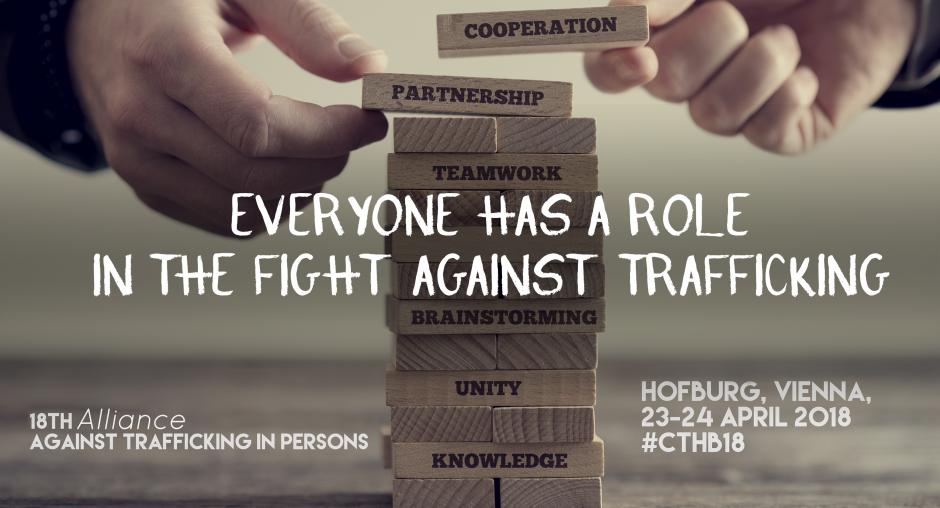Everyone has a Role: How to make a Difference Together
When
Where
Organized by
18th Alliance against Trafficking in Persons Conference
Men, women and children continue to be subjected to trafficking in human beings, as local, national and international statistics painfully illustrate. Human traffickers continue to act with impunity, as low global conviction rates sadly demonstrate. Yet given the nature of the crime, the fate of one trafficked person is unacceptable, the impunity of one human trafficker too brazen. To combat what amounts to one of the most far-reaching and lucrative criminal enterprises on the globe and to afford victims the necessary protection which basic decency and human rights demand, the stepping up of co-ordination and partnership remains more essential than ever. To this end, the 18th Alliance against Trafficking in Persons high-level conference, held on 23-24 April, will promote inclusive partnerships to enhance the coherence of anti-trafficking efforts and strengthen co-operation at local, national, regional and international levels.
“We remain keenly aware that unilateral responses, however effective, cannot tackle the multi-faceted and pervasive nature of trafficking in human beings alone,” said the OSCE Special Representative and Co-ordinator for Combating Trafficking in Human Beings, Madina Jarbussynova. “Any strategies, policies and initiatives seeking to eradicate trafficking must contend with the reality that human traffickers thrive on the loopholes and pitfalls of our co-ordinated responses.”
Working together to develop and implement recommendations
Since 2004, the Alliance against Trafficking in Persons platform has consistently demonstrated its utility as a forum for developing practical responses to combat existing and emerging forms of trafficking in human beings.
Last year’s 17th Alliance against Trafficking in Persons conference not only assembled a record number of 381 attendants from all OSCE participating States and Partners for Co-operation, it also yielded a comprehensive set of recommendations to effectively respond to child trafficking in the best interests of the child. In 2016, the 16th Alliance against Trafficking in Persons conference proved similarly successful in raising awareness and developing recommendations to the then emerging phenomenon of trafficking of human beings for the purpose of forced criminality.
Building upon these results-oriented initiatives, this year’s 18th Alliance conference aims at critically examining existing anti-trafficking partnerships and exploring the benefits of innovative co-operation means often remaining ‘invisible’ in formalized multi-disciplinary frameworks. The conference will also place a special emphasis on new actors whose engagement has the potential to bring added value to existing anti-trafficking responses, including key, yet often omitted actors, such as medical practitioners, teachers, labour inspectors, police units (e.g. community or cyber police, financial investigators), businesses, municipalities, media, community and religious organizations.
Fostering inclusive anti-trafficking partnerships
Seeking to foster ever more inclusive and effective anti-trafficking partnerships, this year’s Alliance conference will bring together representatives of the 57 OSCE participating States and 11 Partners for Co-operation, along with major international organizations and NGOs, academia, civil society, the media, trade unions, and think-tanks.
Follow the conference and engage with leading anti-trafficking experts on Twitter via @osce_cthb using the hashtag #cthb18.

